Three
Get the SKINNY—The 6 Commandments of Going Quick & Clean
Believe me, I’m not trying to be God, and I certainly can’t “command” you to do or not do anything. But I do think that having a few simple rules is the best way to stay on track no matter what you’re trying to achieve. Too many rules and it becomes too hard to stick to; too few and it’s also hard, because you’re not sure what you’re supposed to be doing.
So I’ve come up with 6 simple rules that are easy to remember and that will keep you on the straight and narrow as you follow the path I’ve blazed to get you to Destination Skinny.
First Commandment: Eat foods that are as close as possible to their natural state.
We’ve gotten away from eating foods the way God made them, as in an actual orange or apple. Although the “whole foods” movement is catching on slowly, for a long time it seemed that you could get something apple-or orange-flavored a lot more easily than you could an apple or an orange. Go to Starbucks and ask for a cranberry-, banana-, or pumpkin-flavored latte and you got it. No problem! And have you noticed that you can get practically any fruit-flavored vodka you want? Orange, lemon, pear, pineapple, peach, strawberry, raspberry, coconut, apple, watermelon…Did I miss one? Is there a chocolate-flavored vodka? Of course there is!
You know we’re on the wrong path when it’s easier to buy fruit-flavored liquor or coffee than it is to find an apple at a convenience store or a coffee shop,
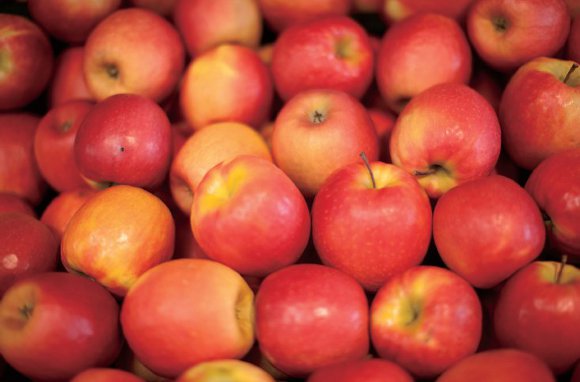
Foods in their most natural state provide the most nutrition, and remember, that’s why you’re eating. I’m sure that when you shop for other things, you want to get the best quality for the least amount of money. And it shouldn’t be any different for food. You should be looking for the most flavor and the most nutrients for the fewest chemicals and calories.
Have you ever heard the term energy-dense with relation to food? Do you know what it means? I didn’t when I started researching clean eating. In fact, I thought it sounded like something pretty good—maybe foods that give you a lot of energy. But when I looked it up, I discovered that energy-dense foods are those that have a lot of calories packed into a small amount of food. A calorie is a unit of energy, so when you read or hear about how many calories you “burn” when you’re engaging in some particular kind of activity like walking, bike riding, or swimming for a particular length of time, what that really means is how much energy it takes. When foods are low-energy-dense, it means you can eat more of them because they have fewer calories. Interestingly, a study conducted by members of the nutrition department at Pennsylvania State University found that when people were fed diets that varied in energy density and could eat as much as they wanted, they ate the same quantity of food by weight no matter how energy-dense the food. What this means is that if you’re consuming foods with a low energy density, you can eat until you’re satisfied and not pay the high-calorie price.

What we should be looking for is foods—like leafy green vegetables, white-meat chicken, and fish—that have low energy density but are nutrient-dense, meaning that they are rich in nutrients compared with their calorie content. Those are mainly foods that are in their natural state and not packed with added sugar or other ingredients that don’t have any nutritional value.
Second Commandment: Feed your body every three hours.
When most of us thing of losing weight, we think about starving. I know I did. And on previous diets I really was hungry all the time. But not on the Quick & Clean Diet. Just the opposite; I want you to eat something every three hours. I never want you to be starving. That’s why, in chapter 14, I’ll be providing a wide variety of recipes and choices for all three meals as well as Quick & Clean snacks.
Some diet gurus advocate eating several small meals throughout the day, and that works just fine for many people. But I like to be more traditional, focusing on three main meals and two snacks. Not only does that keep me more in tune with the way most people eat, but thinking of those in-between meals as snacks also helps me to stick to the program by keeping me satisfied while reminding me not to overeat.
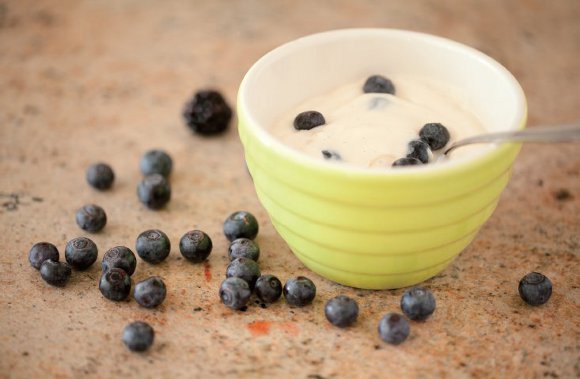
Those snacks are important psychologically too, because if you know you’re not “allowed” to eat until the next mealtime all you can think about is how much longer you have to wait and what you’re going to eat when you do. In other words, all you think about is food. And if you let yourself get to the point where you think you’re hungry enough to eat a horse, there’s a really good chance that, when you finally do sit down to eat, you’ll grab everything in sight.
For years I felt that if my stomach was growling, it meant that I was being successful on my diet. If I was on a diet, I was supposed to be hungry. Not so! Maybe you can sustain being hungry for a few days or even a few weeks, but being hungry is simply not sustainable for long, and your goal, after all, is to change your eating habits for life.
I now know that, almost inevitably, I will be hungry before dinner, and it’s okay to eat something, as long as it’s the right something. So I’m prepared. In chapter 14 I’ll give you a number of snack choices you can always have on hand that will keep you satisfied until your next mealtime without sabotaging all the good work you’ve already done.
Aside from the psychological advantage of knowing that you don’t have to go all the way from breakfast to lunch or lunch to dinner without eating anything, there are some sound scientific reasons for never getting to the point where you’re running on empty. For one thing, your blood sugar will have dropped and your brain will be demanding a quick fix, which usually means heading for the nearest candy or soda machine. Willpower is great, but it will take you only so far. When your blood sugar hits a low point, you’re not thinking clearly, you’re cranky, your energy is low, and willpower just isn’t going to do it for you. Having a snack prevents that from happening, and I also find that it makes me more productive and a lot more pleasant to be around.
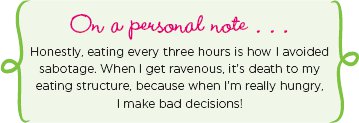
But there’s yet another reason for never letting your body wonder where its next meal is coming from.
Back in the days when our ancestors were hunter-gatherers, it really was feast or famine, and they could never be sure when they’d be eating again. So the people who ate the most—and therefore stored the most fat—were the most likely to survive, because they could burn that fat for energy when food was scarce.
Now, of course, at least in the developed world, our next meal is never more than a supermarket or a take-out menu away, but our bodies are still operating on the principle that if they haven’t been fueled in a while, there’s probably a famine and they need to go into conservation mode. Your metabolism then automatically slows down, and you also tend to become more sluggish and sedentary (the better to conserve your energy stores). What that means if you’re trying to lose weight is that your body is working against you instead of with you. Instead of increasing your metabolic rate and burning more calories faster, you’re doing exactly the opposite!
Knowing that, it should also be clear that you must never skip a meal. We’ve all done it—decided we’re going to skip breakfast and/or lunch and “save up” our calories for dinner. Don’t do it! And, above all, don’t skip breakfast. A study done of participants in the National Weight Control Registry (which includes three thousand individuals who have successfully lost at least thirty pounds and maintained the loss for at least one year) found that 80 percent of those in the study ate breakfast every day as part of their weight maintenance routine.
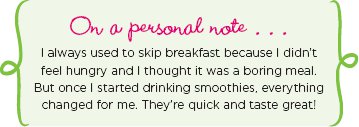
I’ve heard people say that they don’t like breakfast or they don’t have time to eat it. On the Quick & Clean Diet, there is no room for those excuses. I provide recipes for smoothies you can whip up in a minute and drink while you’re dressing. I also provide a wide variety of options so that there’s sure to be something for everyone’s taste. Even on the most restrictive stage of the diet, you can have bacon and eggs if that’s what you want. Or how about a breakfast quiche? And when you get to Stage Two, there’s a recipe for pancakes. Some days you’ll be feeling more adventurous or have more time than others. Those are the days when you can try new things or spend more time preparing. And when you just want something quick and comforting, there will be choices for those days as well.
Third Commandment: Include lean protein, complex carbohydrates, and friendly fats in every meal.
Your body needs all the major nutrients to stay healthy, and you need them to feel satisfied.
Unless you have kidney or liver disease, you’ve probably never been on a low-protein diet. And if you do have those health issues, I’m assuming you’re under the care of a doctor who is monitoring your diet and making sure you get adequate protein from vegetarian sources. I am certainly not equipped and would never attempt to offer that kind of advice. But if you’re reasonably healthy, you should get some protein at every meal, because your body requires it just to stay alive. Protein, as I’ve already said, provides essential amino acids that you must get from food sources.
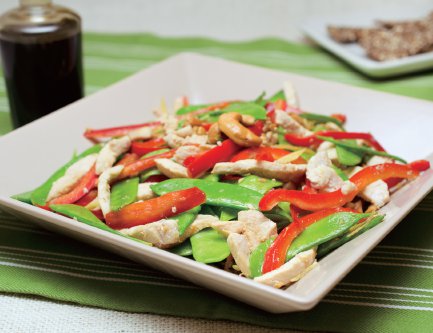
But from a weight loss perspective, protein does something else important as well—it keeps you feeling fuller longer. In fact, a study published in The American Journal of Clinical Nutrition reported that people felt less hunger and experienced greater weight loss when they increased their protein intake to 30 percent of their total diet. And another study published in the journal Appetite found that a high-protein afternoon snack delayed the request for dinner by sixty minutes, far longer than either a high-carb or a high-fat snack.
Finally, protein has been found to reduce appetite, which means, of course, that it helps you feel less hungry. While the mechanism for doing this isn’t entirely clear, one theory is that protein contains tryptophan, an essential amino acid that is a precursor to the production of serotonin, which is a neurotransmitter responsible for regulating mood, appetite, and sleep. So eating protein may increase serotonin levels, causing us to feel more satisfied.
Do you remember the fen-phen diet pill craze of the 1990s? Do you know how it worked? In fact, it was a combination of two medications working synergistically. One of those medications, fenfluramine, increases the levels of serotonin available for the body to use, which tricks the body into feeling fuller and decreasing your appetite. The other drug, phentermine, is similar to an amphetamine (aka speed). The problem is that in addition to speeding up your metabolism, it also increases your blood pressure, speeds up your heart rate, and causes palpitations. I don’t know about you, but I’d rather get my feelings of satiety and energy from healthy, nutritious food. And I certainly don’t want to put myself as risk for hypertension or heart problems in order to reduce my waist size.

So what about carbs? First of all, your body craves them, and second, it needs them to be healthy. All carbohydrates are plant-based foods, and all plant-based foods contain carbohydrates—often with some protein and sometimes also with some good, healthy fat.
We’ve already talked about the difference between simple and complex carbs—that is, between sugary, starchy carbs (baked goods, white bread, pasta, and the like) that quickly turn to glucose in your body, and those such as spinach, broccoli, artichokes, bell peppers, and onions that you digest more slowly. On the Quick & Clean Diet, you’ll be eating plenty of low-glycemic vegetables and fruits that help to fill you up without filling you out. In fact, most vegetables are so low in calories that you can eat as much of them as you want. And the new “food plate” issued by the US Department of Agriculture in 2011 shows that fully half the plate should be filled with fruits and vegetables.
Fruits and vegetables also contain large quantities of phytonutrients—chemical compounds that can only be found in plant foods and that are generally filled with antioxidants, which protect our cells from the damage that leads to aging and disease.
And finally there are fats. As with both protein and carbs, it’s a question of how much and what kind of fats you are eating. In terms of weight control, all fat has 9 calories per gram (as opposed to just over 4 calories per gram for both protein and carbs). So eating too much of any kind of fat can cause calories to add up. But aside from calorie content, as we’ve already discussed, too much saturated fat and virtually all trans fat is bad for your health.
On the other hand, healthy fats, including olive oil and safflower oil, are necessary for building and maintaining cellular integrity, and for proper brain function. In fact, our brain is composed of 60 percent fat! But probably the most exciting thing I learned while researching the Quick & Clean Diet is that consuming the right kind of fat can actually help us to burn fat faster. Again, as with the information on clean eating, I learned about this first from bodybuilding websites. Here’s how it works: Omega-3 fatty acids (see chapter 1) help the body respond better to a hormone called leptin—often called the “I’m full” hormone—secreted by fat tissue, which signals your brain that you’re full. So the more in tune your brain is to these messages, the better appetite control you will have.
In addition, if you deprive your body of dietary fat (and so long as you’re consuming carbs to provide energy), it will do everything in its power to hang on to the fat it’s got. Remember that back in our hunter-gatherer days (where our bodies still live), he who had the most fat lived longest!
Fourth Commandment: Avoid heavily processed foods.
Processed foods, as we’ve discussed, are basically those that have been altered from their natural state. Not only does all that “processing” often cause them to lose much of their nutritional value (such as when the bran is removed from wheat to make white—as opposed to whole wheat—flour), but also, in many cases, unhealthy ingredients are added for texture, color, shelf life, or to make the food more palatable. The Food and Drug Administration (FDA) allows the use of all these additives in the production, processing, treatment, packaging, transportation, or storage of food. I suppose they are necessary if you are going to buy foods so altered from their original state that they need flavor and color put back into them, or if they were made in a factory six months ago and are expected to last for several weeks or even months in the grocery store or your pantry. Sound appealing? Not to me! Do you really want gum in your salad dressing? Xanthan gum is commonly used in salad dressings, chocolate pudding, ice cream, and other rich and creamy factory-produced foods. I don’t know about you, but if I’m going to have gum, I want to chew it and then spit it out!
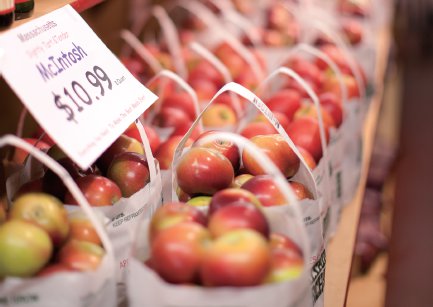
Still, the FDA argues that:
- Emulsifiers, stabilizers, and thickeners give foods the texture and consistency people want.
- Texturizers appeal to your sense of taste and make foods more enjoyable.
- Artificial coloring makes foods more inviting to look at.
- Artificial flavoring gives foods a more intense identity.
- A variety of additives extend the shelf-life of packaged foods.
So let me ask you this—do you really want to consume foods that contain ingredients you’ve never heard of or can’t pronounce? Here are just a few: acesulfame-K, butylated hydroxytoluene, maltitol, monosodium glutamate, olestra, potassium bromate, propyl gallate, and sodium nitrite.
Now let me tell you what they are since you’ve probably been eating them without even knowing it:
Acesulfame-K is an artificial sweetener found in baked goods, chewing gum, gelatin desserts, and, of course, diet soda.
Butylated hydroxytoluene (BHT) retards rancidity in oils. You can find it in breakfast cereal, chewing gum, and potato chips.
Maltitol is an artificial sweetener found in candy, chocolates, jams, and other sugar-free foods.
Monosodium glutamate (MSG) is a flavor enhancer used in soups, salad dressings, chips, frozen foods, and lots of restaurant foods. (If you’re sensitive to it, it can give you a headache.)
Olestra (Olean) is a fat substitute found in foods like chips. (It can cause abdominal cramps and diarrhea and has been banned in the UK and Canada.)
Potassium bromate is a flour enhancer found in foods like white flour and rolls. It strengthens dough and allows it to rise higher, but studies have shown that it may be carcinogenic; it has been banned in several countries including the European Union, Canada, and China. The FDA has urged bakers to voluntarily stop using it, and California requires a warning label on products containing it.

Propyl gallate is a preservative used in vegetable oil, meat products, potato sticks, chicken soup base, and chewing gum to prevent them from turning rancid.
Sodium nitrite is used to enhance the flavor and color and to preserve cured meats such as bacon, ham, frankfurters, cold cuts, and corned beef as well as cured fish.
I’ve found that if you don’t know what it is and you can’t pronounce it, you should probably avoid it!
In addition to all the artificial additives, however, highly processed foods such as frozen dinners (even those that are called diet dinners) are often extremely high in sodium, which can cause water retention and bloating, not to mention high blood pressure, which puts you at increased risk for heart attacks and stroke. The Centers for Disease Control and Prevention states that most of us should be consuming no more than twenty-three hundred milligrams of sodium per day. However, most Americans are getting about 9.6 grams a day, or more than four times the recommended amount. And more than 75 percent of that comes from processed foods and foods we eat in restaurants.

Speaking of processed foods, refined white sugar is about as processed as you can get. It starts out as sugarcane, from which all the fiber is eliminated by extraction; then it’s spun in a centrifuge until all that’s left are those lovely white crystals that falsely promise to “sweeten” your life while offering absolutely no nutritional value. (If you’ve already forgotten some of the bad things sugar can do to your brain and your body, take a look back at chapters 1 and 2.)
My recommendation is that you do the majority of your food shopping in the aisles around the outside of the supermarket where the fresh produce, fish, poultry, and meats are kept. Not only will you avoid temptation, but you’ll also avoid stocking up on a lot of unhealthy stuff. The only things I buy now in the middle aisles of the market are whole grain pastas and cereal, wild and brown rice, and the “pantry helpers” listed in chapter 5.
Fifth Commandment: Don’t obsess about calories.
I can’t tell you never to count calories, because at the end of the day, if you take in more calories than you expend, you’ll gain weight. If you take in fewer than you burn, you’ll lose weight. That’s a basic law of thermodynamics.
You burn a certain number of calories in a twenty-four-hour period just by your body performing its essential functions even when you are in a non-active state—that’s called your basal (or resting) metabolic rate. It varies somewhat depending on your age, height, and weight, and you get to add some calories depending on your degree of activity. There are formulas you can find online for determining exactly how many calories you need to maintain your weight; obviously, if you consume fewer than you need, you’ll lose weight. But that’s all very complicated, and the good news is that obsessively counting calories isn’t really necessary on the Quick & Clean Diet.
That said, I have provided for you the nutrition information for all the recipes and calories consumed each day on the fourteen-day plan. This is merely for those who either insist upon knowing how much they are consuming out of habit, or for those who require this information for medical reasons. By the way, if you have health issues that cause you to be under a doctor’s care, it is imperative that you check with your doctor before even thinking about committing to any weight loss plan. The Quick & Clean Diet is about making you feel and look better, but you need to be smart and make sure it helps, not hurts, your health.
If you eat the foods on the lists I provide in the portions suggested for each stage of the diet, you will lose weight without obsessing about calories. It’s really portion distortion that causes most of our problems. Research published in the New England Journal of Medicine has found that people who are unsuccessfully trying to lose weight tend to underestimate their food intake by as much as 47 percent. That’s why you may find writing down what you eat each day to be helpful and eye opening: It forces you to confront your food choices. No hiding anymore! It’s all right in front of you.
If you’re eating fresh, whole foods, stick to the portion size I provide, and if you’re buying something that comes in a package be sure to make note of how many servings the package contains. It’s written right there at the top of the Nutrition Facts label, but many of us don’t pay attention and assume that one package equals one serving. Not so! Don’t get fooled!
Sixth Commandment: Drink lots of water.
I have friends who tell me they hate water and they just can’t do this. You know what I tell them? I tell them to just suck it up. Suck, sip, drink it up, just get it down!
First of all, I don’t really understand why anyone would hate water. What is there to hate about it? But beyond that, drinking a lot of water is important for everyone and absolutely essential if you want to lose weight. You’ve probably heard the old advice about drinking eight glasses a day; well, I drink three liters a day! That’s almost a gallon, or, in terms of an eight-ounce glass, almost thirteen glasses. And believe me, that alone has made a huge difference in my weight loss and how my body looks. Also, it feels great to be hydrated. You will have more energy and feel more alert.

Water helps you lose weight in many different ways. On the simplest level, it fills you up so that you’re likely to be less hungry. One study published in the Journal of the American Dietetic Association found that people who drank water before meals ate approximately 75 fewer calories at their meal compared with those who didn’t drink water. In addition, many of us tend to think we’re hungry when really we’re only thirsty. So if you think you’re hungry, drink water; you may find that you weren’t really hungry after all.
But there’s more. A small study done in Germany found that drinking seventeen ounces of water raised the study subjects’ metabolic rate by 30 percent, starting about ten minutes after they drank the water and peaking thirty to forty minutes later. The researchers estimated that by increasing their water consumption by a liter and a half a day, people could burn an extra 17,400 calories (representing a five-pound weight loss) in the course of a year. And that’s without changing anything else in their diet or level of activity.
And finally, remember what happens when you don’t eat enough? Your body thinks it’s starving and holds on to those calories. Well, the same is true of water. We need water to stay alive, so if you don’t drink enough, your body will start to hold on to what it’s got, making you look puffy and bloated. Not a pretty picture!
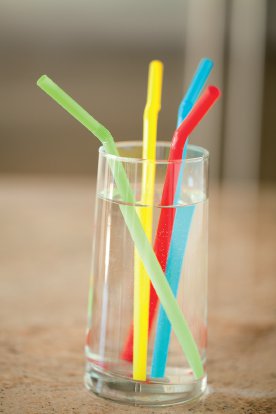
So I repeat: Drink, drink, drink! And if you’re one of those people who don’t like the taste of water, add a squeeze of lemon, lime, or orange to make it more palatable. Or make your own flavored water (see chapter 7).
That’s the skinny on eating quick and clean. Start following these 6 simple rules and I promise that you’ll start to see the results within days.
To get you started, in the next chapter I’ll introduce several foods that you are free to embrace. Many times when we start a new eating program, we obsess about what we can’t eat; with the Q & C plan, however, you focus on what you can eat. Take a look.
